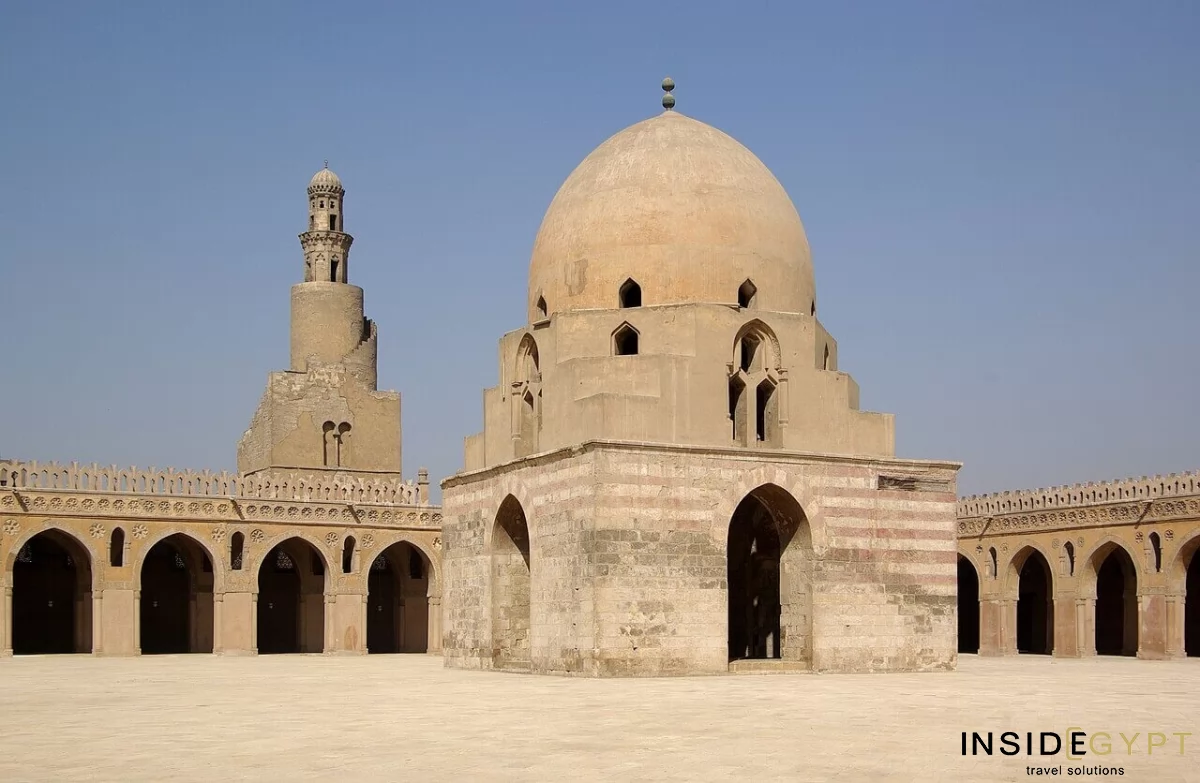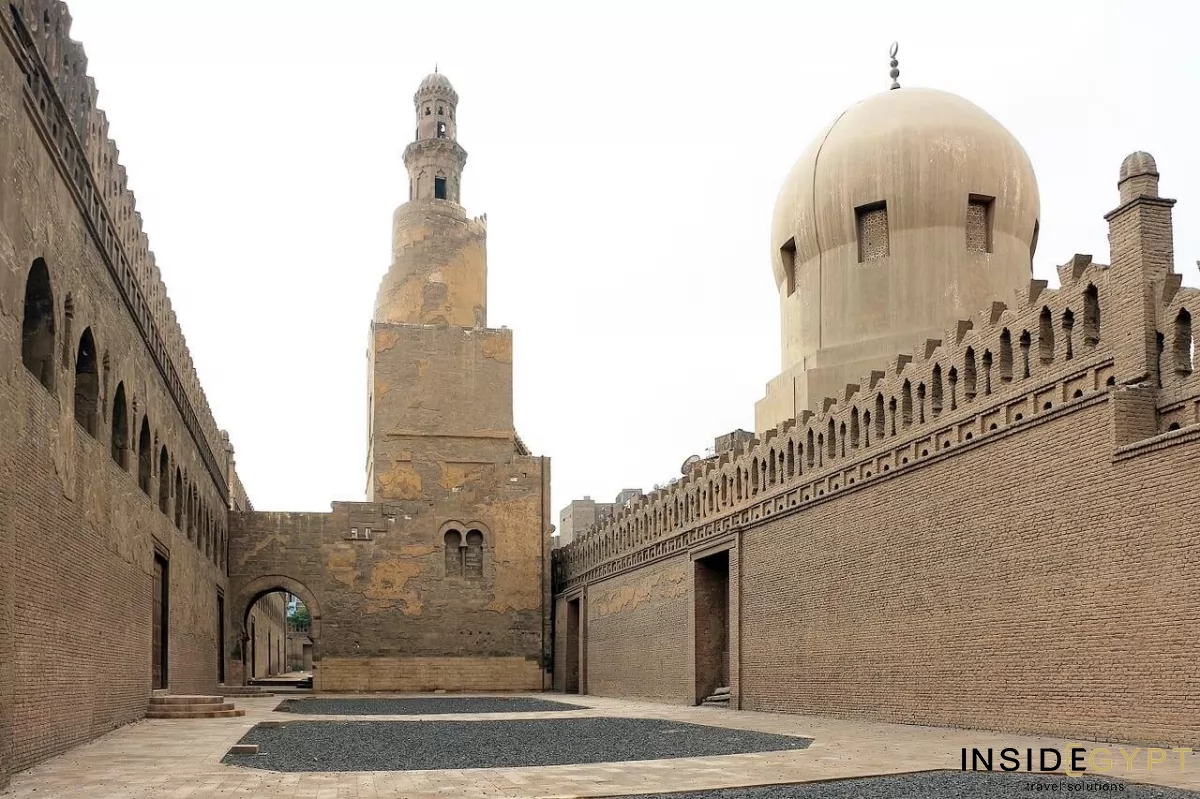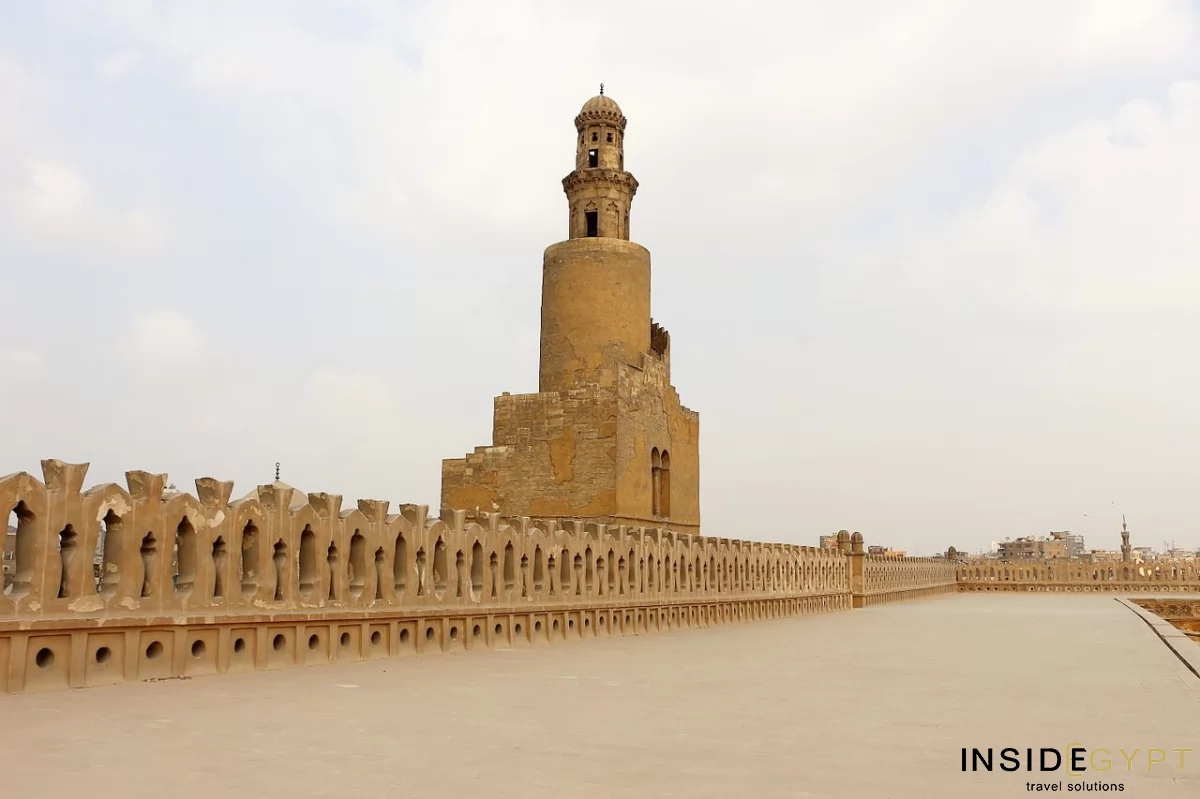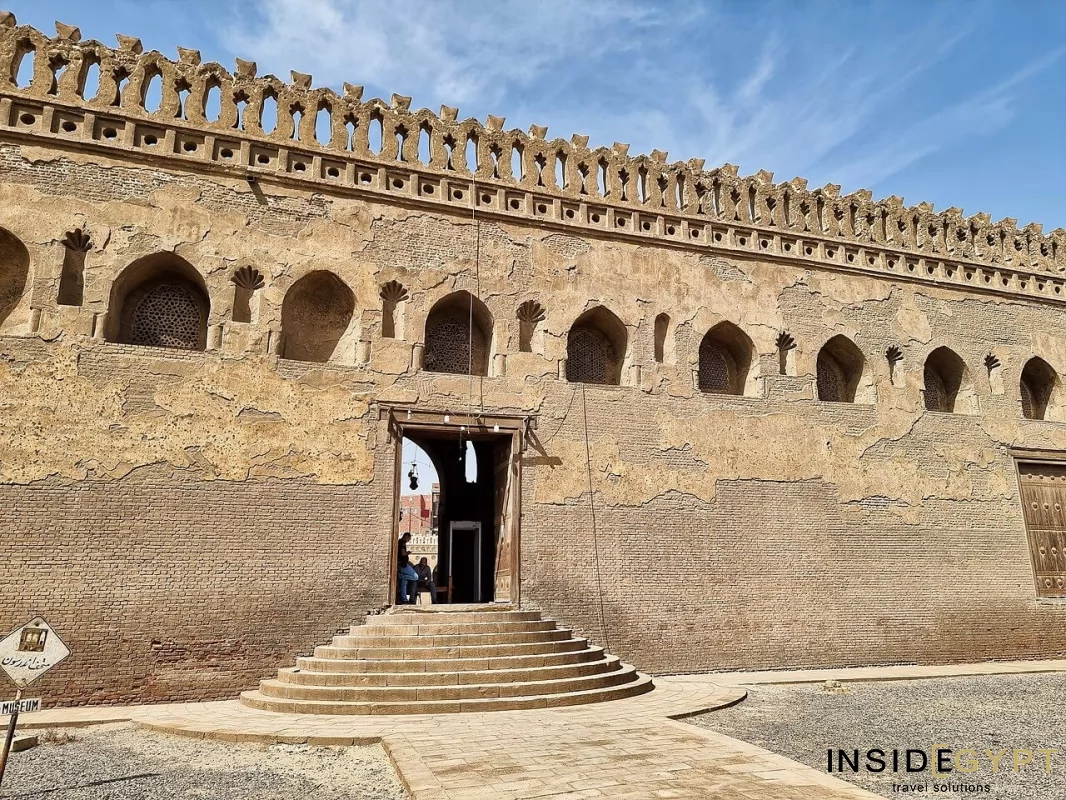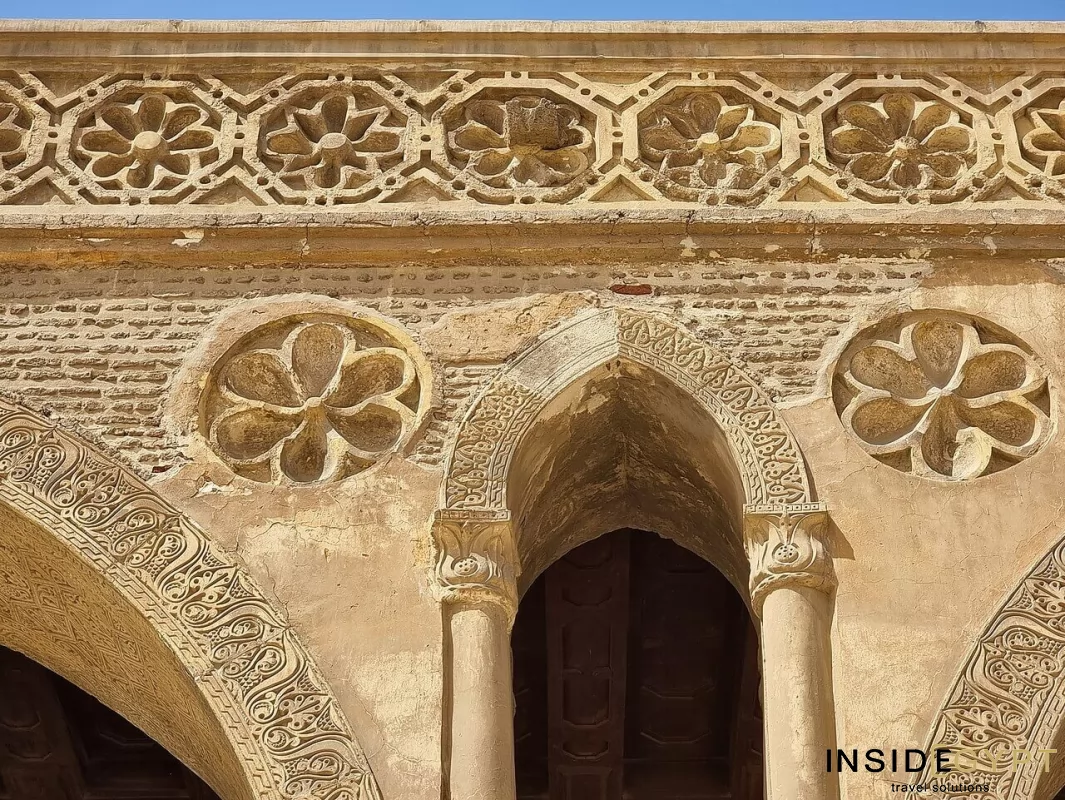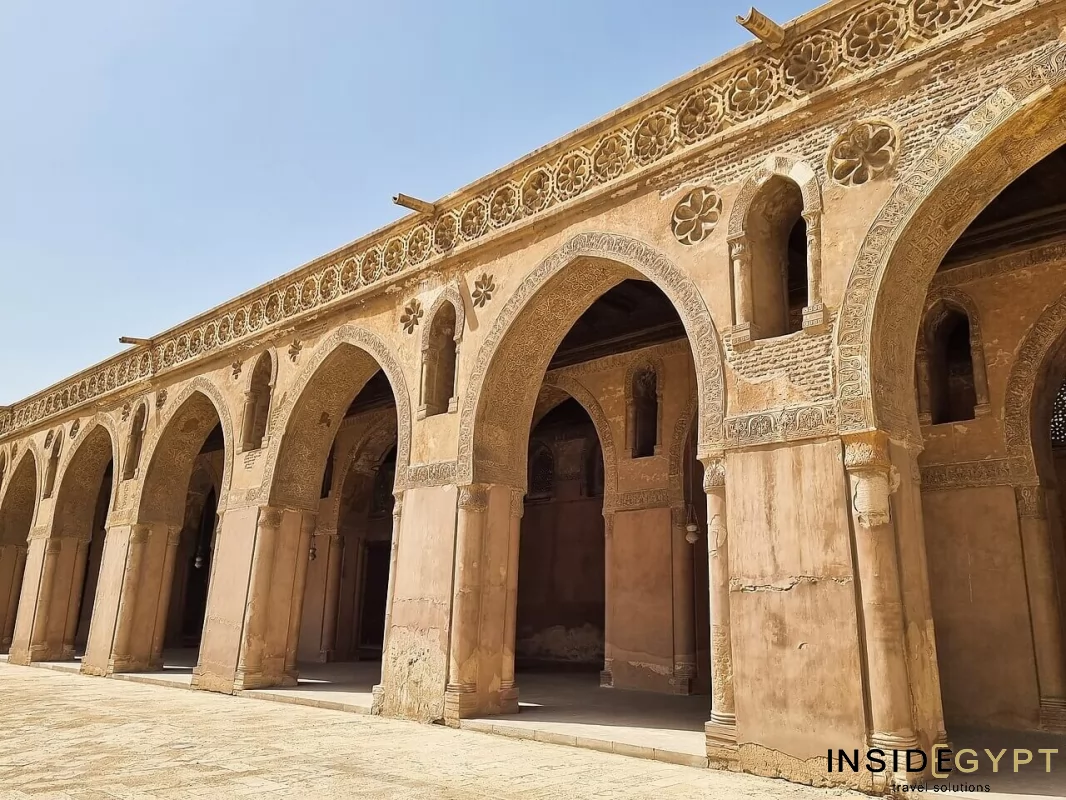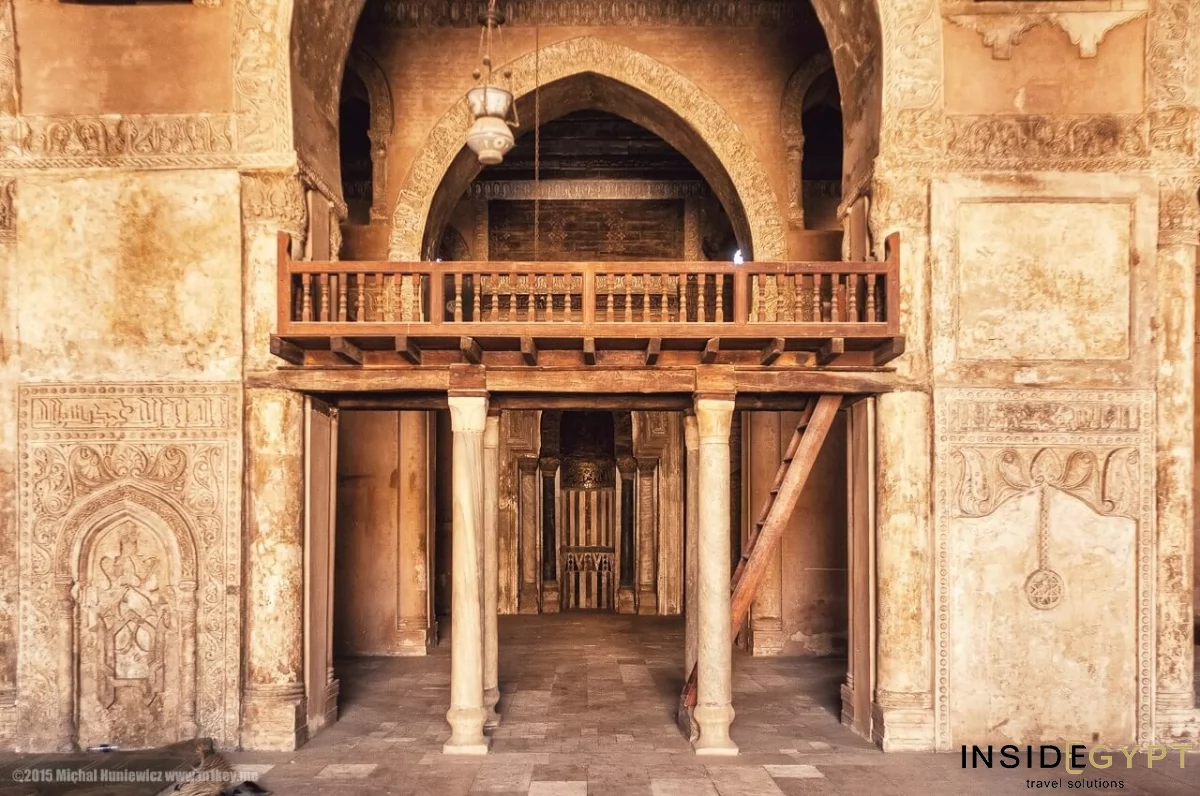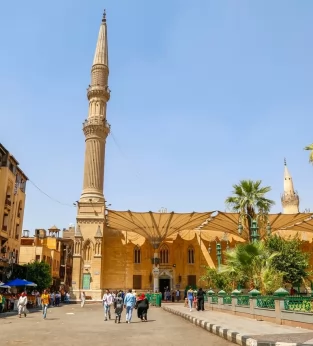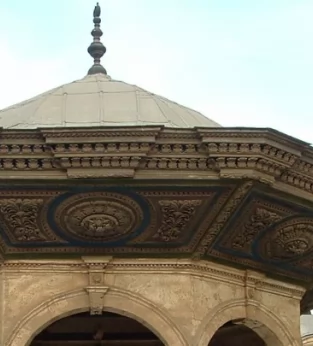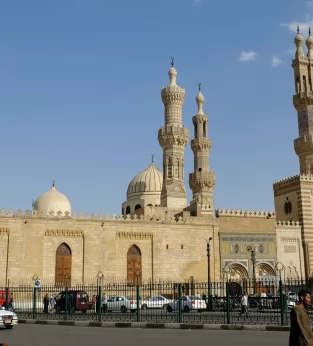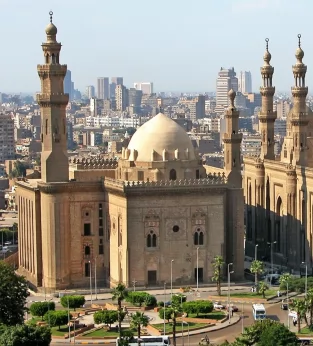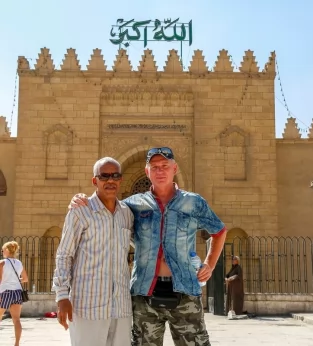Stay updated!
The Mosque of Ibn Tulun is one of the oldest and largest mosques in Cairo, situated in the heart of the city. Founded in 876 AD by Ahmad ibn Tulun, the Abbasid governor of Egypt, the mosque is located in the historic district of Sayeda Zeinab, near the area of Al-Muizz Street. Its strategic location allows it to connect with various significant historical sites in Cairo, making it a focal point for both visitors and historians alike.
Architecturally, the mosque showcases a unique blend of architectural styles and influences, reflecting the design traditions of the Abbasid era. It features a vast courtyard surrounded by colonnades, adorned with intricate stucco work and colorful tiles. The mosque’s minaret is particularly noteworthy, with its spiral design inspired by the Samarra minaret in Iraq, standing at 40 meters tall. The overall design emphasizes spaciousness and simplicity, with vast open areas that enhance the serenity of the worship space.
The mosque holds great historical significance, as it symbolizes the Islamic Golden Age in Egypt. It served as a center for learning and culture, attracting scholars and artists who contributed to the intellectual discourse of the time. Over the centuries, the mosque has witnessed numerous historical events and transformations that have shaped its legacy, making it a vital part of Cairo's Islamic heritage.
Today, the Mosque of Ibn Tulun remains an important religious site and a must-visit attraction for tourists. Its well-preserved structure and tranquil environment offer a glimpse into the grandeur of Islamic architecture while serving as a reminder of Egypt's rich history. Visitors can explore the mosque, appreciate its beauty, and reflect on its enduring significance in the Islamic world.
